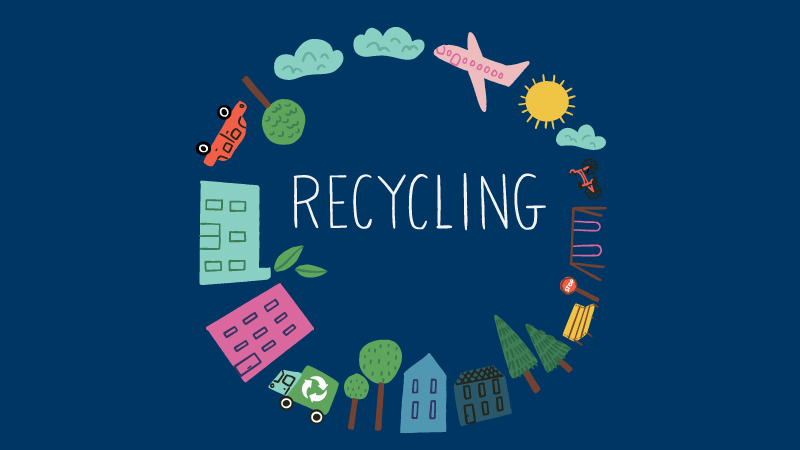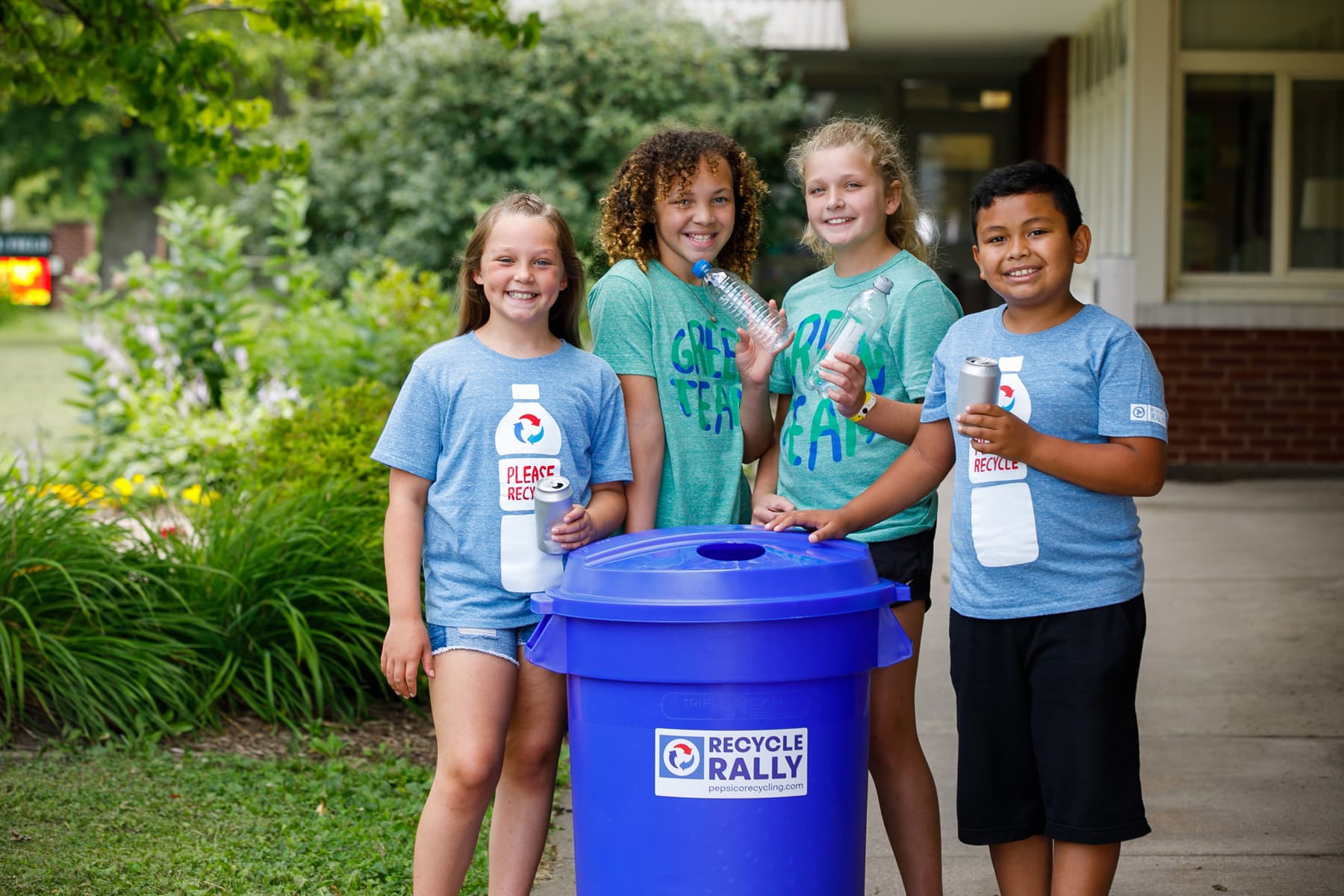Discover the History of Recycling: How Did We Get Here?

Reduce, Reuse, Recycle. Most of us have heard this mantra many times in our lives. Is it new, or has it been part of society for centuries? The answer to that question might be surprising! Here is the history of recycling from the Bronze Age through the first Earth Day.
The origins of “Reduce, Reuse, Recycle”
Can a circular economy—one that reduces waste and reuses resources—go back as far as the Bronze Age? There is evidence that the mantra of “reduce, reuse, recycle” is not just a modern invention, but one that has been around for centuries!

It’s clear that even in ancient times, humans saw the value in reusing valuable resources. Dating back to 79 AD, under a thick blanket of volcanic ash, researchers found mounds of trash that were being collected, sorted, and resold by the Romans when Pompeii was destroyed by Mount Vesuvius. Meanwhile, the first recorded instance of paper recycling took place during Japan’s Heian Period in 1031 AD.
Early recycling of metals
Scrap metal has likely been recycled since shortly after metalworking began, but there is clear evidence of it reaching back to 400 BC. The Romans are believed to have melted down old bronze coins and jewelry to create statues, weapons, and other essential items. These practices continued for centuries in ancient societies and continue right here in the United States.
In the days before mass production, we as a society had to be more conservative with our resources. From Paul Revere to Rosie the Riveter, scrap metal recycling is a part of the history of recycling. This is particularly true during times of conflict. As Revere, a silversmith, rode from town to town to warn colonists of the advancing British soldiers during the Revolution, there’s a good chance his horse was fitted with shoes made from recycled metal.

During the Civil War, Southerners donated “church bells, steeples, gates, pots and pans, farm equipment and scraps,” and soldiers “gathered spent ammunition and rifles from the fallen to be sold as scrap or reused.” During World War II, in response to a massive shortage of raw materials, scrap drives were held to collect metal that would be turned into weapons. All of these efforts were seen as an act of patriotism and reinforced the necessity of recycling.
Early recycling of glass and pottery
Our prehistoric ancestors relied on the bladders of dead animals, plant shells, and animal horns to carry water. But around 5000 BC, pottery changed everything. Recently, Science in Poland reported that scientists discovered 3,000-year-old tools in Dubai made from iron, bronze, and copper that were reclaimed from broken ceramics.
Over several millennia, we learned to use fire to strengthen and fortify clay. Then the first glass bottles were crafted around 1500 BC. In the ancient Turkish city of Sagalassos, archaeologists uncovered glass shards, kiln fragments, and fuel ash slag, all pointing to a history of recycling glass in these regions.

With the collapse of the Roman Empire in the fifth century, however, the popularity of glass-making waned. Around the 15th century, though, the Renaissance brought renewed interest in the skill. By 1850, the reusable jar was invented, and people could simply screw on a lid to store food instead of needing wax to seal the container. For nearly another 100 years, our ability to craft and utilize glassware blossomed until the 1940s when plastics were introduced.
Recycling of early plastics
In 1907, Dr. Leo Baekeland invented Bakelite, the world’s first entirely synthetic plastic. This pivotal moment in the history of recycling paved the way for the alternatives used during World War II when natural resources were scarce. Invented as a synthetic silk in 1935, nylon “was used during the war for parachutes, ropes, body armor, helmet liners, and more. Plexiglas provided an alternative to glass for aircraft windows.”

The plastic production boom continued after the war ended, with the first plastic bottles hitting the market in 1947. While they were practical in many ways, they were very expensive to make. With the introduction of polyethylene in the 1950s, production became more affordable, and the material made it easier to design colorful, lightweight, fun containers.
Designed to be reused, plastics such as Tupperware, Thermos, and themed lunch boxes could be found in homes across the country in the 1950s and 1960s. Over time, though, this opened the door to products like garbage bags and Ziploc bags, signaling a shift in how plastics were used and laying the foundation for the recycling problems we face today.
The single-use, packaged era
When trade expanded, and more goods became available during the first wave of the Industrial Revolution, there was a sudden need for better product packaging. These materials, however, were very expensive and generally reserved for premium foods and luxury items.
The second wave of the Industrial Revolution ushered in dual-use packaging. A tobacco tin could be transformed into a picnic lunch box while flour sacks did double duty as dress materials. By the late 1800s and early 1900s, however, brands saw an opportunity to develop an identity through innovative packaging. This shift prepared the public for the next phase in the transformation of consumer goods.

For years, salespeople weighed and measured food, while customers waited. Then, grocery stores began to provide them with a self-service experience. The “silent salesman” took the form of boxed cereals, canned vegetables, and meats wrapped in cellophane. These packaged foods also had a longer shelf life, adding to their appeal.
By the 1970s, convenience became the primary motivator for manufacturers as consumers expected to buy products in packaging that could be thrown away. Frozen TV dinners, medications in blister packs, and widespread use of plastics became common. This is how the single-use, disposable era of packaging began.
The birth of recycling programs
Established in London in 1865, the Salvation Army played a greater role in the history of recycling than many may realize. To help combat poverty, they hired unskilled workers to collect and recycle unwanted goods throughout England. Today, the organization continues to accept donations and redistribute resources to meet the needs of the community.

Meanwhile, in 1881, across the ocean, New York City was dealing with its own waste crisis. Garbage collection was disorganized, litter lined the streets, and “75% of NYC’s waste was dumped into the Atlantic Ocean.” More than a decade later, as the Salvation Army brought its mission to the United States, New York’s Commissioner George Waring eliminated ocean dumping and mandated recycling.
The city’s recycling program separated household waste into three categories: food waste, rubbish, and ash. Participation was mandatory, and the recycling law was enforced by the local police department under the watchful eye of Commissioner Theodore Roosevelt. These efforts continued to be so successful that, since the 1960s, no waste disposal facilities have been constructed in New York City, and by 2001, all of its landfills had been closed.
In the latter half of the 20th century, it became clear that branded, single-use packaging was a problem. Americans needed to figure out how to eliminate or reduce their contributions to the nation’s waste stream. As the seeds of the flower child culture began to bloom, it set the stage for the first Earth Day. This was celebrated in 1970.
It’s clear that recycling is a smart choice humans have been making since early times. Whether it was out of necessity or was simply the logical, simple thing to do, recycling to create tools, packaging, and more isn’t a new concept. Not only does it save resources, but it also saves money!
Gary Anderson, a student at the University of Southern California, won a nationwide contest by designing the original “chasing arrows” logo, creating the enduring symbol that reminds us of our pledge — reduce, reuse, recycle. Is it still working today? Read the second half of our review of the history of recycling to continue the discussion!
Take the Discover the History of Recycling Kahoot! Quiz
Create Your Own History of Recycling Presentation
Learn More

Recycle Rally
Recycle Rally is a free K-12 program that provides rewards and tools to help enhance recycling at your school!
Explore now
Additional Resources
Our comprehensive library of resources was designed to inspire the next generation of green leaders.
Explore now


